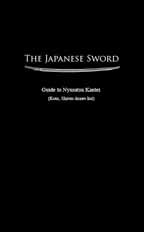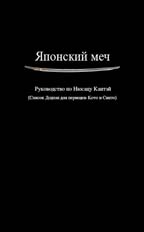Nihonto News |
This post is published on behalf of Setouchi City Council (Okayama Prefecture). The city is running a campaign via Kickstarter from Tuesday 20th November–Saturday 22nd December as part of our efforts to raise the 5,000,000USD in capital needed to buy the National Treasure art sword, the ‘Yamatorige’, for their leading sword gallery, the Bizen Osafune Japanese Sword Museum. This 13th century tachi is considered the most significant extant masterpiece from the Bizen area, where modern Setouchi now stands. This feat is all the more impressive as, of the 2.8 million registered blades in Japan, half were made in this one small region, including an impressive 47 of the 111 designated as National Treasures. Not only is it an exquisite work of art, but the sword is also of great historical importance, having been the favoured blade of Uesugi Kenshin, among the most powerful warlords of the 16th century and national traditional icons. While many Bizen masterworks currently reside in prominent museums such as the USA’s Metropolitan Museum and the UK’s British Museum, not one is presently in the very museum that bears the area’s name. As such, and due to its singular cultural significance, the city jumped on the chance to purchase the sword when, in January 2018, the sword’s owner gave the city a once-in-a-lifetime sales offer. |
|||
I'm going to do a little experiment which I had in mind for a while. As most of the modern sword collectors I'm looking for new swords for sale on almost daily basis and over time I've acquired a list of quality online sword shops. From now onwards I'll be posting a weekly list of new swords categorised by its certificates. Swords without papers will not be posted due to large volume and sizable amount of effort required to filter out good stuff from junk. Please let me know if you find it useful. I'm also hoping that owners of the mentioned online shops won't mind: in theory it may boost their sales. So here goes the first update (see the comment below). |
|||
Royal Armouries Museum in Leeds is hosting a seminar on Japanese arms & armour in September 2011. Japanese arms and armour is an ever popular theme for our History in Your Hands seminars – come along and handle genuine items of Japanese arms and armour from our collection. Learn about the production and use of katana and wakizashi as well as taking a close-up look at armoured sleeves, helmets and face masks. Hosted by our Curator Emeritus Ian Bottomley this is a unique opportunity to get up close and personal to some of the most beautifully made and fascinating items in our collection. * All of the seminars run from 10:30 to 16:30 and take place at the Royal Armouries Museum, Leeds. Seminar Details Time: 10.30am-4.00pm For further information or to book please email educate.leeds@armouries.org.uk or call +44-113-220-1888. |
|||
Royal Armouries Museum in Leeds is hosting a seminar on Japanese swords in February 2011. See the description below. Our ever-popular Japanese swords seminar will give participants a unique chance to learn about making and care of important cultural objects. Delivered by Keeper of Armour & Oriental Collections Thom Richardson and Curator Emeritus Ian Bottomley the session gives the chance to handle genuine objects from our study collections which are not usually on public display, including a wakizashi by Tadahiro of Hizen of the mid 17th century with its complete set of mounts, bags, and sword box, and a tachi of about 1400 by Sadatsugu of Bitchu. Seminar Details Time: 10am-4.30pm For further information or to book please email educate.leeds@armouries.org.uk or alternatively call Jon Copley on +44-113-220-1888. If you wish to attend, hurry up as the number of seats is limited! I'm hoping to meet some of you there. |
|||
Having received a notification from www.thejapanesesword.com last week, I am now a proud owner of Nobuo Nakahara's 'Facts and Fundamentals of Japanese Swords. A Collector's Guide' (translated into English by Paul Martin). Actually, I have two copies now, already thinking of some kind of contest or raffle for Nihonto Club to give one away. I had a quick glance and couldn't stop myself reading few pages here and there. Now I'm looking forward to weekend to read it from the very start to the end. It's somehow different to other Nihontō books. Instead of typical indispensable but dry sequence of glossary terms, lists of schools and prominent smiths, it is shaped as an engaging narrative with Q&A sessions, bullet points, flashbacks and terms related to the context. It offers very practical, hands-on view to sword collecting and appreciation, and gives an impression of attending a high quality seminar with a master, rather than of reading a heavy-weight academic publication. It was especially appealing as I was always wondering if it will ever be a book or online resource which (while being professional and scholarly) provides a view at Nihontō tailored to a beginner's mind, temporarily stepping away from highly specialized mindset of a connoisseur. Now we have one. I think it's very important. A person who just started having an interest in authentic Japanese swords will hardly comprehend descriptions of hamon and hada of Kunimitsu, but will rather have simple questions like 'how to tell if the sword is good' and 'how old is it' and other practicalities. This is what this book seems to be about. Needless to say that the quality of publication and imagework is top-notch, being typical to Kodansha Intl. As seen in Questions & Answers, Nakahara-sensei offers a straight and refreshing view at the subject with less emphasis on the lore, but focusing more on the sword itself. Some of his opinions may be seen as unorthodox and strong, but as mentioned by Paul Martin in the introduction there are many different theories and viewpoints in Japan, and all of them should be considered in order to get a broad understanding of Japanese swords. It must be said, I would really really like to have this book available at the time when I started collecting and studying Nihontō. It wouldn't be a surprise if in a few years this book will become an absolute must-have for any collector (beginner and experienced). |
|||
As announced in NBTHK mailing list a new book by Markus Sesko is out (124 pages, published in June 2010). Author himself describes the book as: My aim with this publication is to make the major genealogies of Japanese swordsmiths and their schools from the kotō to the shintō and shinshintō periods easily accessible to the Western reader, namely in that they are complete and have been revised for the first time, in a single book. The publication begins with a brief introduction to the history of Japanese sword literature. |
|||
Nihonto Club is happy to present a new book by Paul Martin, The Japanese Sword: Guide to Nyusatsu Kantei (Koto, Shinto Dozen List) (available in English, French, Italian and Russian). It comes in a handy size (unlike most sword books) and is beneficial to sword enthusiasts of all levels. It has basic information for beginners, blade shape charts, explanation of the rules of kantei and most importantly a Koto, Shinto dozen list for easy navigation when practicing nyusatsu kantei. The book can be ordered at http://www.thejapanesesword.com in the Store section. |
|||
We are about a week away from the release of our pocket guide to nyusatsu kantei. If you are interested in pre-ordering a copy, please order from the contact page at http://www.thejapanesesword.com. It is W 4.25" x H 6.87". 50 pages. $12 +pp. It comes in a handy size (unlike most sword books) and is beneficial to sword enthusiasts of all levels. It has basic information for beginners, blade shape charts, explanation of the rules of kantei and most importantly a Koto, Shinto dozen list for easy navigation when practicing nyusatsu kantei. Sorry for the bandwidth, but I felt that the western sword world needed this amazingly important tool in order to be able to practice and build their confidence in nyusatsu kantei. |
|||
Nihonto Club wishes you and your family a Merry Christmas and a Happy New Year! Thank you for your participation and contribution to the Club this year. It's been a great success, the audience has grown by 60%. I hope you find it useful and I'm looking forward to seeing you around next year. |
|||
A ban on Samurai swords comes into effect from today. Those caught with the weapons could face up to seven years in prison. In a bid to cater for collectors, those made before 1954 or at another time by traditional hand-made methods will be exempt.
Talks about potential sword ban started in December 2007 after another high profile attack involving a 'samurai sword'. It is known that Department of Justice had been in contact with local martial arts organisations (Iaido Association of Ireland is particular) is order to avoid unnecessary restrictions for martial arts practitioneers and authentic sword collectors. In the light of recent global trends to regulate possession and transportation of 'samurai' swords (which sometimes comes in quite narrow-minded forms) the new Irish legislation appears to be reasonable, especially taking into account the (more than modest) size of the local sword scene. Mirroring the UK sword ban which was introduced in April 2008 as one of the questionable measures to fight 'knife crime', authentic hand-made Japanese swords (Nihonto) are exempt (however I couldn't yet find any reference to whether sports equipment such as iaito and shinken is to be banned or not). The real concern is the practical side of the legislation and the way it's going to be implemented. There's been numerous occasions in UK since introduction of the sword ban when law-abiding collectors had trouble importing antique swords. It's perfectly understandable due to the fact that in order for Customs to make sure that it's legal to import a sword, some sort of cerfificate required proving its age and provenance. And the most common cert of this kind (if any) is the NBTHK paper hand-written in Japanese. No wonder Customs officers, sorting office workers and law enforcement authorities would not be able to take it as a supportive documentation without difficult (and costly) translation.And this is the neigbouring UK which is much more accustomed to importing/exporting Japanese collectible weapons than Irish. How many Customs officers and An Post employees were instructed about differences between replica and authentic Japanese swords or even have seen ones? Will they be collector-friendly or take an eBay approach and stop any import of 'illegal samurai-like swords' unless (with immense trouble) proven otherwise? If temporarily or permanently seized, will real Nihonto be given a proper care? There is no doubt that curculation of cheap and dangerous replica had to be stopped, even with the level or crime involving samurai swords being ridiculously low in comparison to the usage of widely available home utensils.But will the fair treatment of martial arts practitioneers and sword collectors be guaranteed? Time will tell. |
|||






